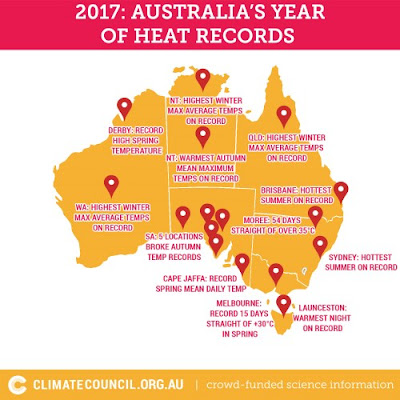Check out the blue and red boxes on this energy sticker (for our washing machine).
Those numbers (55 and 464) represent the energy needed for cold and hot washes. Quick maths shows the blue number is 88% less than the red number.
To put that another way, the hot wash uses more than 8 times as much energy. Surely this is a no-brainer.
For cold washes that's a yearly total of $14.85 in electricity. If we used hot water, that number would surge to $125.28. Woah, that's a big difference.
The cold wash button is a real saver.
Wednesday, March 28, 2018
Wednesday, March 21, 2018
Choosing the right lights
Often there's a mental barrier to getting energy-saving lights. They cost money.
The Checkout did the maths for a light that's on 5 hours per night at a price of 30 cents/kWh.
A six dollar bulb can save you around $20 every year! That's an amazing return on your money.
Plus they also last longer. So in the long run you save even more by not having to replace them as often.
The video also mentions the Light Bulb Saver app. It's handy for calculating the saving for your particular situation and is available on Google Play and iTunes.
Is it worth it?
Yes. Even if you're renting. For your main lights, most upgrades make their money back in less than a year.The Checkout did the maths for a light that's on 5 hours per night at a price of 30 cents/kWh.
A six dollar bulb can save you around $20 every year! That's an amazing return on your money.
Plus they also last longer. So in the long run you save even more by not having to replace them as often.
The video also mentions the Light Bulb Saver app. It's handy for calculating the saving for your particular situation and is available on Google Play and iTunes.
Wednesday, March 14, 2018
5% off power thanks to renewables
Powershop, the energy retailer that loves renewable energy, has just announced a 5% price-cut "all thanks to renewable energy".
CEO Ed McManus says it's because they've managed to get really good price deals with new wind and solar farms.
See the video for more information or read more details of the power stations.
At the moment this price-cut is for Victorian customers only, with NSW and Queensland customers to expect a lower price around mid-year.
CEO Ed McManus says it's because they've managed to get really good price deals with new wind and solar farms.
“The price that we get the energy from these new wind and solar farms is cheaper than the energy we can get from the normal wholesale market day to day.”
See the video for more information or read more details of the power stations.
Today a price drop for all our customers in VIC thanks to our investments in renewable energy. NSW/QLD stay tuned. Got Qs, go here: https://t.co/H75pUXAGx4🌱💫
— Powershop Australia (@PowershopAus) February 28, 2018
At the moment this price-cut is for Victorian customers only, with NSW and Queensland customers to expect a lower price around mid-year.
See more about:
renewables
Monday, March 12, 2018
An unprecedented 5 years
The last 5 years (2013-2017) is officially the hottest period on record. More details are in the Climate Council's report "2017: Record-breaking Year for Heat and Extreme Weather".
This heat graph really tells the story.
There's a bit of variation from year to year. Often are El Nino years are a bit hotter and La Nina years not so much. This next graph colours the El Nino and La Nina years differently. We can see that even La Nina years (blue) are getting hotter, as are the El Nino years and neutral years. Which ever way we look at it we are entering uncharted territory.
The report also found that
This heat graph really tells the story.
There's a bit of variation from year to year. Often are El Nino years are a bit hotter and La Nina years not so much. This next graph colours the El Nino and La Nina years differently. We can see that even La Nina years (blue) are getting hotter, as are the El Nino years and neutral years. Which ever way we look at it we are entering uncharted territory.
The report also found that
- 2017 was the third hottest year ever recorded, and the hottest year in which temperatures have not been boosted by an El Niño event.
- The world’s 10 hottest years on record have all occurred since 1998 and 17 of the 18 hottest years on record have occurred this century.
- 2017 was Australia’s third hottest year on record.
- Seven of the ten hottest years on record in Australia have happened since 2005. Five of the seven have occurred the past five years.
- 2017 broke records for hot, dry conditions with more than 260 heat and low rainfall records broken throughout winter.
- The increasing global heat, driven primarily by the burning of fossil fuels, exacerbated extreme weather events around the globe and in Australia in 2017.
Subscribe to:
Comments (Atom)




